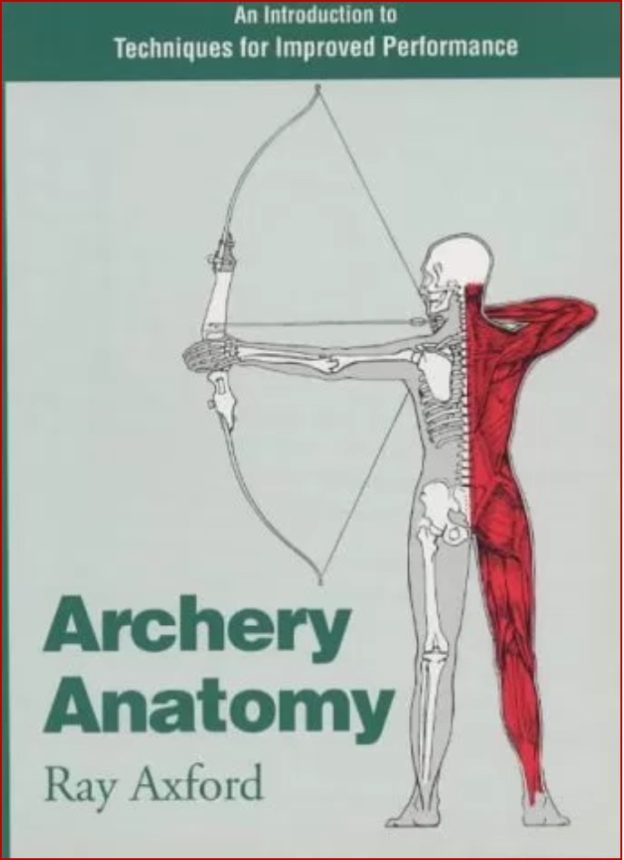Ray Axford, the author of Archery Anatomy, describes his book as a “primer of anatomical biomechanics and elementary physical mechanics as they relate to archery”. That’s a pretty accurate description: if you’re looking for tips to combat your target panic, you won’t find them in here. Archery Anatomy, as the title implies, is deeply grounded in the physical: in “the body and bow moving and working together”.
The book is split into two parts. The first part, Body and Bow Anatomy, covers the bones, muscles and movements of the human body in some depth and with a vast number of detailed illustrations. This first section also deconstructs bow anatomy, and demonstrates the forces that radiate through a bow in motion.
Part Two, Technique Analysis, explores the physical forces that bind archer and bow in the act of shooting. Anatomical diagrams show exactly what your bones, joints and muscles are doing throughout the shooting sequence. The push-and-pull of forces between the body and the bow, and the effect these forces have on the movement of the muscular-skeletal system, are clearly illustrated. If you want to know exactly why a twisted wrist gives a sloppy release (settle down at the back), Physics is here to tell you.
There’s an immense amount of detail here: every part of the body that comes into contact with the bow, at every stage of the shooting process, is deconstructed to the bone — almost literally. There’s an especially interesting look at variance in facial structures —noses and chins, anyway — and how these natural differences impact the efficacy of the reference point.
In terms of bow style, Archery Anatomy is focused very much on Olympic recurve — there’s no mention of traditional bow types here. Most of the information presented will apply equally to all tribes, but the author does assume that stabilizers and a sight are being used.
It is exceptionally well illustrated (although male anatomy is depicted as default throughout, with the female body visible only in chapters specifically focused on sex differences). Physics aficionados, or those who just remember their school physics better than me, might get more out of the visual side of this book: there are a lot of force diagrams here. In a former life Axford was an airline design engineer, and he certainly applies an engineer’s eye to the body/bow relationship.
In that sense, the book is more likely to be of interest to coaches, or archers looking to seriously advance in the sport, than to the hobby archer.
That said, there’s no shortage of books covering the history, culture and psychology of shooting. Archery Anatomy brings the body back to the centre of the sport. In his sign-off, Axford argues that many new archers devote more time to learning arbitrary rules of engagement — competition etiquette, handicaps and so forth — than on developing the kind of basic body sense that sets one up for a life in sport. With recent developments in science suggesting that we think with our bodies as much as with our brains, he may have a point.
Archery Anatomy by Ray Axford was first published in 1995, and has been reprinted seven times since then. Published by Souvenir Press, it’s available for £12.99 in the UK and $16.95 in the US.


